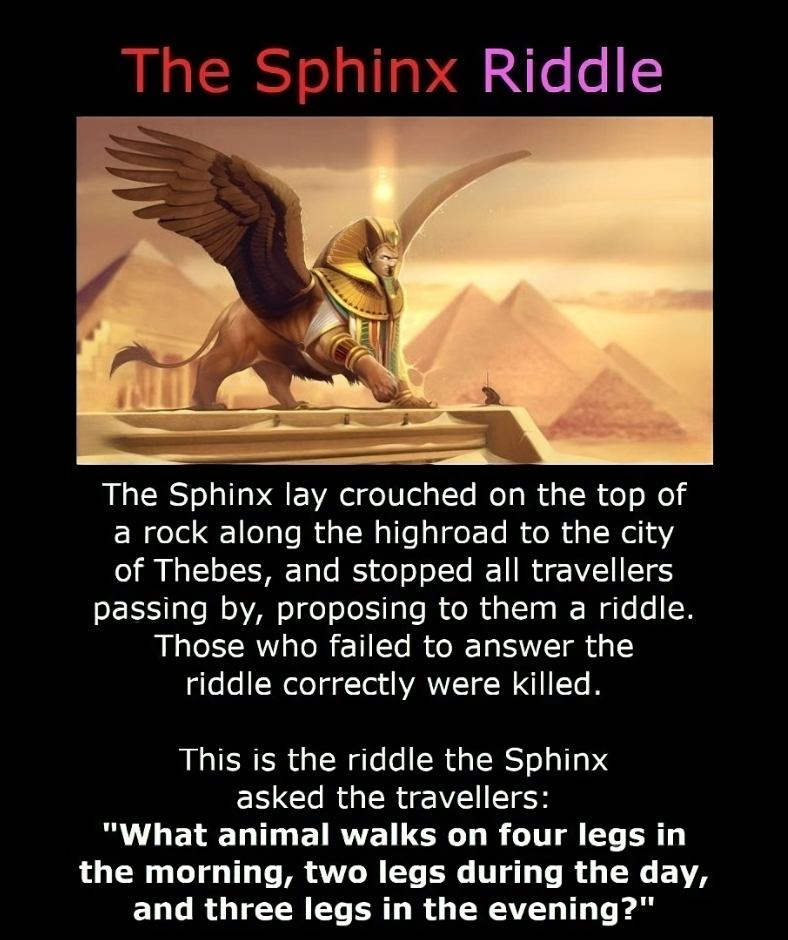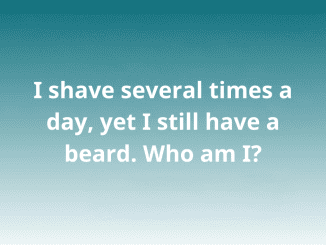The Sphinx, a mythical creature with the body of a lion and the head of a woman, has long captivated the imaginations of people around the world. In the classic tales of ancient Greek mythology, this enigmatic being would crouch atop a rock along the main road to the city of Thebes, posing a riddle to every traveler that dared to pass.
The stakes were high for those who attempted to solve the Sphinx’s puzzle. Those who failed to provide the correct answer were swiftly met with a gruesome fate – the Sphinx would pounce upon them and destroy them. This made the Sphinx’s riddle a true test of both wit and courage for all who encountered it.
So, what was the riddle that struck fear into the hearts of Theban travelers? The Sphinx posed the following conundrum: “What animal walks on four legs in the morning, two legs during the day, and three legs in the evening?”

This riddle, steeped in symbolic meaning, was a true test of one’s insight into the human condition. The answer, as provided by the legendary Oedipus, was “man.” In the morning of life, a human crawls on all fours as a child. In the prime of life, we walk upright on two legs. And in our twilight years, we rely on a cane or walking stick – our “third leg” to support us.
The Sphinx, stunned by Oedipus’ clever response, was so mortified that she immediately cast herself down from the rock, perishing in the process. Oedipus had solved the enigma and proven his intellectual prowess, paving the way for his eventual rule over Thebes.
The Sphinx’s timeless riddle continues to captivate and challenge us today, serving as a poignant metaphor for the stages of human life. Its enduring legacy reminds us that true wisdom lies in our ability to see the bigger picture and find deeper meaning in the simplest of questions.
The Sphinx’s riddle is rich with symbolic meaning, reflecting the profound complexities of the human experience. The transition from four legs to two to three represents the physical and emotional changes we undergo as we age, from the dependency of childhood, to the independence of adulthood, to the fragility of old age.
But the Sphinx’s puzzle is not just about the stages of life – it also speaks to the importance of perspective and critical thinking. To solve the riddle, one must look beyond the surface-level details and seek a deeper understanding of the human condition.
In the end, it was Oedipus’ ability to think outside the box and see the bigger picture that allowed him to triumph over the Sphinx’s cunning. His clever response not only saved his own life but also paved the way for his eventual rule over Thebes, cementing his place in history as a true hero of wisdom and insight.
The Sphinx’s riddle continues to captivate and challenge us today, serving as a powerful reminder that true wisdom often lies in our ability to ask the right questions and see the world from a fresh perspective. Whether you’re facing a personal dilemma or tackling a complex problem, the lessons of the Sphinx’s puzzle can serve as a guiding light, inspiring us to dig deeper and uncover the hidden truths that lie beneath the surface.
So, are you up for the challenge? I dare you to ponder the Sphinx’s puzzle and see if you can uncover its profound secrets. Who knows, you might just find the key to unlocking your own hidden potential and becoming a true hero of wisdom and insight.


